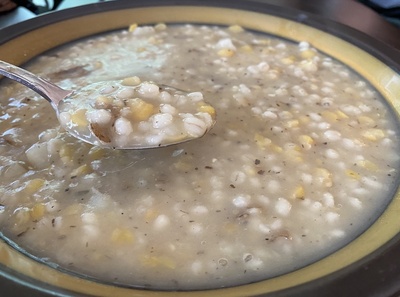© 2013 - 2025 Hank Grabowski
CC BY 4.0
While dabbling with a technology is a hobby and can be fun, it really isn’t until I try to build something with it that I can truly have an appreciation for whether it really works or not. I’m now at that point of exploration with Dart and Flutter for cross platform desktop development. I opaquely mentioned this topic in this post . Yesterday I released a beta of my first application written in Flutter Desktop, called Kryanite . I’ve gotten to a comparable stage of work with other cross platform desktop tools over the past couple of years. Obviously none of which were quite totally satisfactory since I kept looking around. That search may be over now. At this point I can say that Flutter Desktop is by far my favorite cross platform development platform to date and I’m planning on doubling down on using it, and more generally Dart, in my development efforts.
(More ...)It is no secret that Facebook has been expertly doing the vendor lock play to expand and retain their user base. If all of your family and friend photos, event information, thoughts on current events, etc. are solely in their database then you have no place else to go once you finally join and start using it. It becomes more reinforcing the longer you are there and the more friends that join and do the same thing. In recent years though due to a combination of legislative action, public pressure, and fear of regulation they started allowing users to export all of their data from their system. It’s kind of hidden and can be a little confusing but once it’s done you can get a giant ZIP file archive of all your data. While it meets the letter of what was requested the fact is that that data is not digestible to the average user. To anyone that wants to actually use their Facebook data they still are stuck doing it through their system.
This post is about a preview release of a new tool I am working on to actually be able to use your Facebook Archive, which is called Kyanite . This tool is available for Windows, Mac, and Linux desktops. It will allow you to view, search, and extract data from your archive in a human digestible way. In same cases, like with search, it’s even more effective than the built in tools Facebook provides. Below is a quick tour of the product and how you can start using it. You can go right to the product page to start using it today. Also check out this post on how to get your Facebook Archive . Now on to the details of the Kyanite…
(More ...)Facebook actually has a mechanism for users to download their entire history from their site. It’s not exactly on the front page but not entirely hidden. If you don’t download it correctly it’s hopelessly difficult to make it useful. When you do do it correctly it is still difficult to use but with a tool like my Kyanite archive viewer it is possible to finally get access to your Facebook data in a meaningful way. This post is about how one can properly generate this archive within Facebook to use with this tool.
(More ...)The last month has been an incredibly productive time for me but not in my traditional areas of contribution. While I’ve done some open source contribution on other projects it has been more intensive work on a new open source project that really took up a lot of my time. I’ll be blogging a lot more on that application and releasing betas of it after next week. The big news in the short term on that front that I wanted to share was that the application development took me from an on-again-off-again dabbler with Flutter and Dart to it becoming my primary language. It has become my primary language so much that when it was time to automate some image transformation code I skipped my usual go to language, Kotlin, for Dart. It also is the first time I’m feeling this confident about a platform choice for cross platform application development.
(More ...)I’ve had an off again/on again relationship with Microsoft over the years. I despised them through the 90s as they became the big brother corporation gobbling up all of the computer market while Mac, Unix, and other operating systems like BeOS went by the wayside both as a natural process and because of monopolistic practices MS imposed on system vendors. The same was true for how they successfully dominated the early web after stumbling out of the gates. But most of my professional development and engineering life was on Windows machines, using Visual Studio, apps that only ran on Windows, developing software that only ran on .NET. It was only in the 2012 period on when customer’s demanded Linux-based systems that I was able to practically break free from that and my having alternative OS’s like Mac, Linux, or a BSD being just a side thing. At the same time the tech stacks I was working with lacked some of the cleanness and modernness I was used to expecting with .NET. That’s why I was so excited when Microsoft bought Xamarin, .NET Core came out, and it looked like Microsoft was going to finally embrace open source cross platform development. While it was never all roses and there were stumbles it was still a process that was moving in the right direction. It was but doesn’t seem to be any longer.
(More ...)I have never been an open source purist or ideologue. It actually wasn’t until ten years ago or so that I really started to engage with and contribute to open source projects. In that time I’ve migrated from being philosophically ambivalent about free and open source software (FOSS) to being a very large proponent of it. Even within that progression I’ve gone from finding the “viral nature” of copyleft licenses to be unfair to feeling that non-copyleft licenses lead to more practical unfairness in many cases. My driving motivation is the essence of fairness combined with believing that humans sharing information as openly as possible is what is best for us all. I optimize that in my own projects by choosing the copyleft Mozilla Public License (MPL) as my go-to open source license. In this post I detail my thoughts behind that.
(More ...)
When someone comes to me asking how to get started with making bread I usually point them to Jim Lahey’s no-knead bread technique which was made famous in the New York Times, video link here . It is a dirt simple way to get tasty bread which most of the times comes out looking nice. However one potentially daunting part of it is the use of a dutch oven preheated to 500 degrees that one has to put the dough into. I was discussing this with my neighbors as a great thing to do with kids but the dutch oven step had me concerned. I therefore decided to try it with cold metal bowls and cookie sheets instead. As you can see above and below my first try didn’t come out perfect but I think it came out well enough to document it here.
(More ...)As a software engineer I know that having backups is important in case things are accidentally deleted or destroyed I also know that testing backups is an important thing to do. Simply having it doesn’t count. For my sourdough starter that I’ve been keeping going for over a decade and that the neighbor who gave me some has kept going since the mid-70s the fear of accidentally killing it means that it gets a backup. The backup is in the form of drying it out and storing it like that. I did this several years ago with mixed success. Now that I have a food dehydrator I have a much better backup. It’s so good that some friends want some for themselves to get started with sourdough. I therefore have decided to document the process of reactivating the dried starter. This whole process takes 4-5 days to go from dried flakes to making a fully raised real loaf of bread.


While sourdough discard can be used for many purposes from English Muffins to pancakes to pizzas, sometimes I just want to use it up quickly and easily and no fuss. I do this by using all of the starter to make a sourdough roll. This won’t be the sexiest best roll you’ve ever had but it is tasty and is the equivalent of a “one pot” past recipe but for sourdough bread.
(More ...)
I’m making my way through my podcast backlog (now down to “just” 25 hours) from the oldest to the latest episodes for a change. Buried in the backlog was this Gastropod Podcast episode on the history of potato usage in food history. It is the usual combination of history with some tasty tidbits. One apparently not so tasty tidbit was the use of the potato in what’s called Rumford’s Soup . This split pea, barley, and potato soup was designed as food for the poor and imprisoned in Germany by Sir Benjamin Thompson . Their contributor described it as having “mixed” reviews. It’s intended purpose was to feed these masses but Thompson himself thought it being tasty was important and believed that it was. What’s the real scoop on it? I decided to make a batch myself and look at it’s nutritional viability using my trusty Cronometer.com .
(More ...)